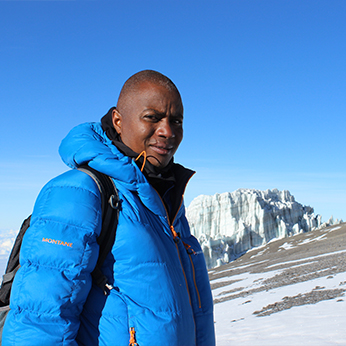The Olmoti Crater
Olmoti Craters’s floor is shallow and covered with tussocks of grass. Besides the Maasai and their livestock you can sometimes see eland, buffalo and reedbuck. The Munge River origins from the waters from the Crater walls, cross the caldera, and plummets down over cliffs, falling some hundreds of meters into the steep-sided ravine below.
Returning from Olmoti you can see the depression that is formed where the slopes of Olmoti, Empakaai, Lolmalasin, and Losirua volcanoes join with the outer rim of Ngorongoro. This shallow, grassy basin is called the Embulbul depression. Like the similar Malanja depression to the west, it probably collects and provides a sink for a good deal of water that appears lower down at the foot of the mountains.
The Empakaai Crater
From the crater rim, you have a fantastic view of the craters’ green paradise. The caldera is about 6 km wide and nearly half of its floor is covered by a lake. The water in the lake is alkaline and the depth of the lake is about 85m, unusually deep for soda lakes in East Africa. The steep walls of the caldera, clothed in forest, rise in some places to almost 300m above the floor.
The views along the trail downwards are spectacular at every point. All along you can enjoy the changing views of Empakaai itself. In addition, from the northern and eastern sides, you can look out to the dramatic cone of the still-active volcano, Oldoinyo Lengai. If the day is clear, you can look beyond Lengai to the Great Rift Valley and Lake Natron. Sometimes you can even see the distant snows of Kilimanjaro far on the eastern side of the Valley. On your way downwards to the lake, you might see buffaloes or bushbucks, blue monkeys, many birds (like sunbirds and turacos).
At the shore of the lake are often waterbucks and elands. It is a joy to walk around the lakeshore, experiencing the serenity and quiet beauty of this wild spot. The nights at the Craters can be quite cold (both craters are at 3500 m), especially in June, July, and August.
Ngorongoro Crater Highlights
It was created as a result of an imploded volcano, establishing a unique caldera that stretches 20km in diameter, is home to its very own eco-system and is teeming with indigenous wildlife. Located right near the famous Serengeti National Park, it is ideally located for visitors to explore the variety of plant and animal life living within the crater walls.
This is one of the most magnificent tourist destinations in Africa unparalleled in its distinguished scenic beauty, wildlife and atmosphere. The Ngorongoro Conservation Area (NCA) is an area situated 180km west of Arusha in the Crater Highlands region of Tanzania. Land in the conservation area is multi-use; it is unique in Tanzania as the only conservation area, providing protection status for wildlife whilst allowing human habitation. The NCA is usually visited on the return journey from the Serengeti to Arusha. Stunning views and unique landscape are a certainty when visiting this spectacular region


